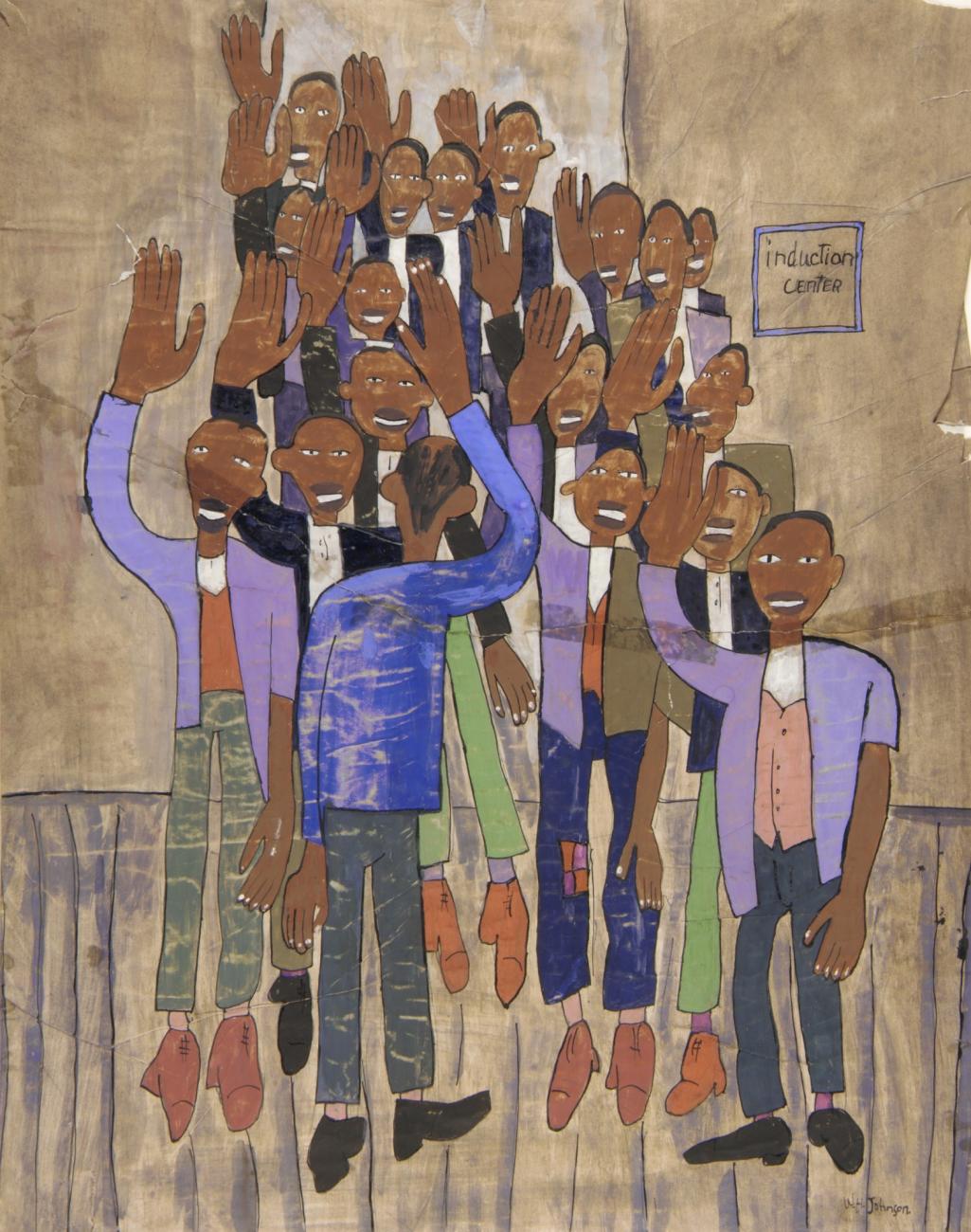As a Smithsonian Institution Fellow in Paper Conservation, Im Chan is spending the year in The Lunder Conservation Center's paper conservation lab studying and treating works on paper by William H. Johnson. American Art's collection, which has approximately 800 works on paper by this prolific artist, is an ideal place to study these works.
In the upcoming months, Ms. Chan will be investigating the artist's methods and materials, examining selected prints and drawings, and performing a variety of conservation treatments. Her focus is primarily on the works made post-1938, during the period Johnson taught at the Harlem Community Art Center with the Works Progress Administration's Federal Art Project. The teaching position gave Johnson the opportunity to interact with artists and the African-American community in Harlem. During this time, he made hundreds of prints and drawings during and after classes at the Art Center. Johnson's interactions with WPA artists brought about new changes, both in style and materials, to his work.
The artist's choice of inexpensive, fast-drying, and opaque paints and inks greatly influenced the look of his prints and drawings. Space and movement were achieved through the use of bright colors, sharp lines, and angles. Many drawings and prints are made on newspaper and on the back of old posters. Johnson used a variety of media, including commercial poster paints, pen and ink, watercolor, and gouache.
Through visual examination and analytical techniques, such as x-ray florescence and infrared spectroscopy, the conservator will be able to identify the artist's palette and better understand the materials and techniques Johnson used to execute his works. Over the next few months, Ms. Chan will explore a number of topics about the artist's studio practice. She will investigate the types of paints and inks that the artist used and how Johnson prepared and applied the media. She will also examine artworks and determine the method of screen printing used. Ms. Chan will also research the possibility that a relationship existed between the tempera paints used in Johnson's drawings and the inks used in his screen prints.
Through her research, conclusions, and treatments, our conservation fellow will not only be able to address aesthetic concerns, but also will also ensure that the works are available for future generations to study and appreciate.



















